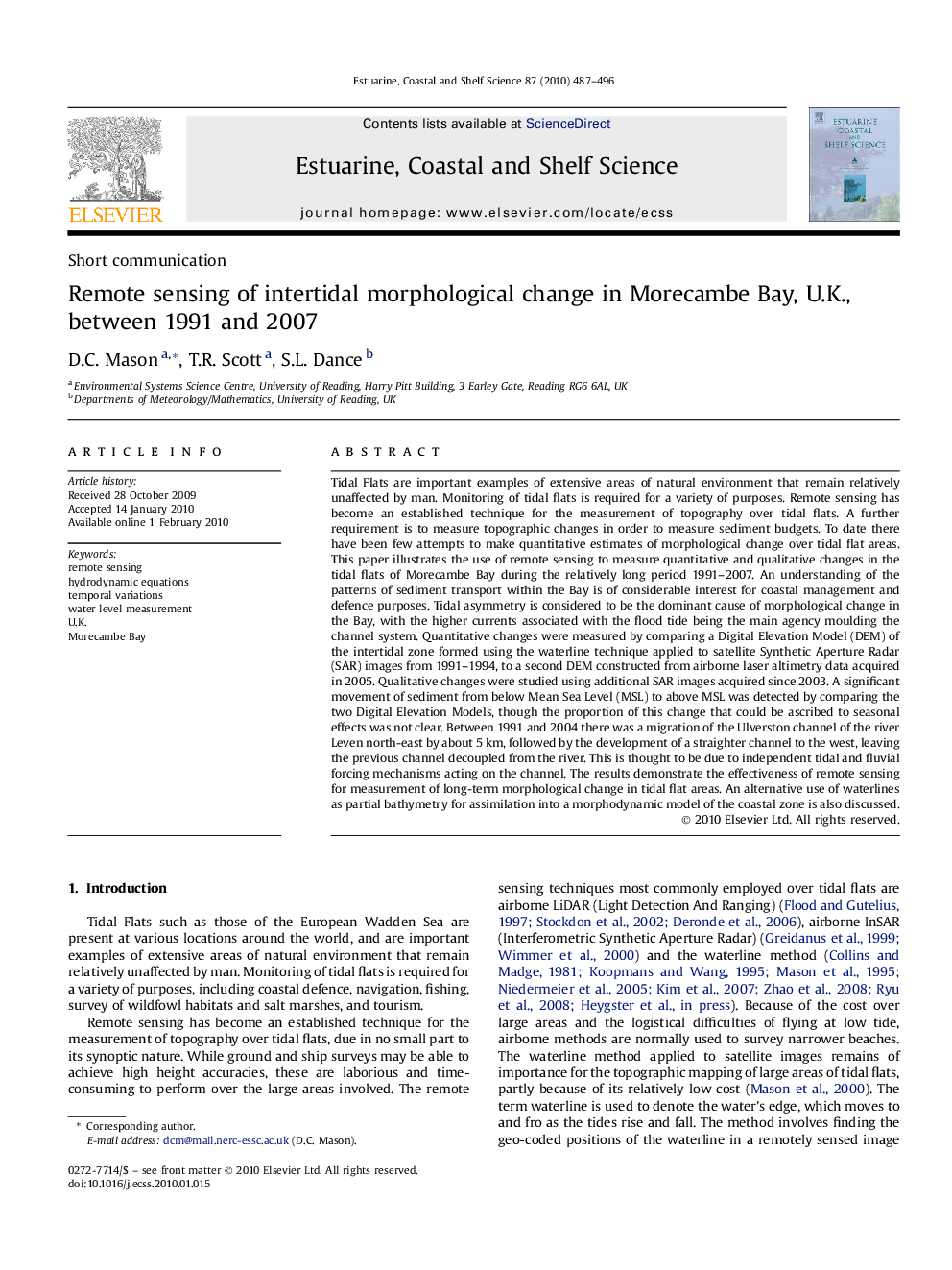| کد مقاله | کد نشریه | سال انتشار | مقاله انگلیسی | نسخه تمام متن |
|---|---|---|---|---|
| 4540936 | 1326699 | 2010 | 10 صفحه PDF | دانلود رایگان |

Tidal Flats are important examples of extensive areas of natural environment that remain relatively unaffected by man. Monitoring of tidal flats is required for a variety of purposes. Remote sensing has become an established technique for the measurement of topography over tidal flats. A further requirement is to measure topographic changes in order to measure sediment budgets. To date there have been few attempts to make quantitative estimates of morphological change over tidal flat areas. This paper illustrates the use of remote sensing to measure quantitative and qualitative changes in the tidal flats of Morecambe Bay during the relatively long period 1991–2007. An understanding of the patterns of sediment transport within the Bay is of considerable interest for coastal management and defence purposes. Tidal asymmetry is considered to be the dominant cause of morphological change in the Bay, with the higher currents associated with the flood tide being the main agency moulding the channel system. Quantitative changes were measured by comparing a Digital Elevation Model (DEM) of the intertidal zone formed using the waterline technique applied to satellite Synthetic Aperture Radar (SAR) images from 1991–1994, to a second DEM constructed from airborne laser altimetry data acquired in 2005. Qualitative changes were studied using additional SAR images acquired since 2003. A significant movement of sediment from below Mean Sea Level (MSL) to above MSL was detected by comparing the two Digital Elevation Models, though the proportion of this change that could be ascribed to seasonal effects was not clear. Between 1991 and 2004 there was a migration of the Ulverston channel of the river Leven north-east by about 5 km, followed by the development of a straighter channel to the west, leaving the previous channel decoupled from the river. This is thought to be due to independent tidal and fluvial forcing mechanisms acting on the channel. The results demonstrate the effectiveness of remote sensing for measurement of long-term morphological change in tidal flat areas. An alternative use of waterlines as partial bathymetry for assimilation into a morphodynamic model of the coastal zone is also discussed.
Journal: Estuarine, Coastal and Shelf Science - Volume 87, Issue 3, 30 April 2010, Pages 487–496